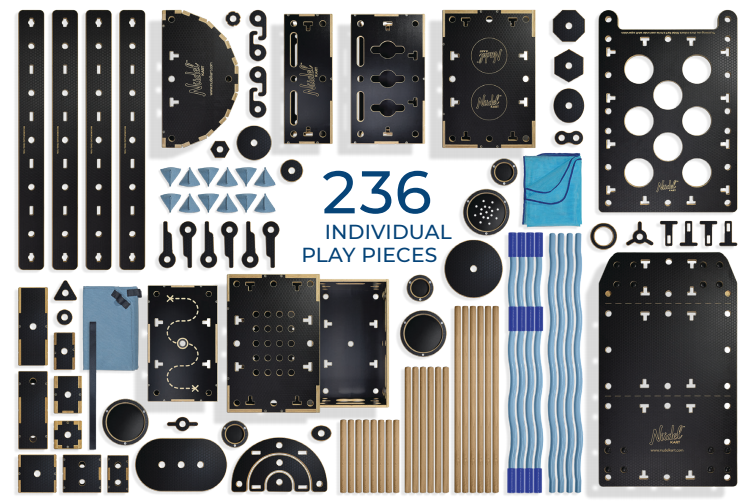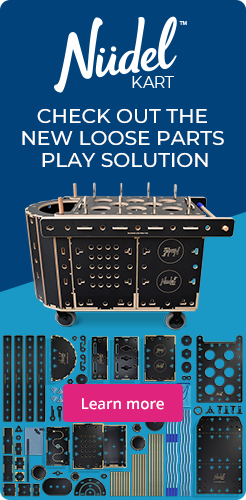By Jeni Wilson
The period from birth to primary school is arguably the most important learning stage of a child’s life. Children are extremely curious and adventurous. They love learning about the world, how it all works, and their place in the world.
Early childhood education is about the holistic development of all facets of learning. From social and emotional learning, to cognitive and physical learning. It is about building a foundation for the lifelong love of learning and well being. But it is also about developing capable, curious and future independent citizens of the world.
Play and loose parts (Early Childhood Education)
Children learn through play. They learn to communicate, be friends, to think and change their mind. Play comes naturally to children. It’s instinctive and therapeutic.
Interestingly, young children are often more engaged with simple things like a marble in a bottle than the latest expensive electronic toy.
It is these understandings about the role of play in early childhood development, that educators choose loose parts play to meet their educational aims.
When children play…
Teachers can:
- Find out what interests them;
- Build a relationship with students;
- Identify special needs;
- Target specific needs.
Children can:
- Develop communication skills;
- Be problem solvers;
- Be imaginative and creative;
- Work with others;
- Develop confidence;
- Learn to love learning
- Build skills;
- Develop social skills;
- Be curious;
- Foster independence;
- Develop resilience;
- Use conflict resolution skills;
- Be engineers or designers;
- Use maths skills.
One of the key benefits of loose parts play is their open-endedness and the possibilities for child-led learning or student agency. Loose parts play provides endless opportunities for construction and reconstruction, invention and reinvention. A range of play types is possible, and the play they engage in can match the child’s level of development.
Ideas for Loose Parts Play:
The list of possibilities is endless, loose parts can be:
- Moved, combined, stacked, counted, sequenced, grouped, and changed;
- Traded at their shop, they can be used to create the tallest tower, a circus, castle or the longest bridge.
- The fastest rocket, time machine or even a boat.
- Enable children to make a farm, playground or a train station; or
- The props at a performance or even the stage.
(See other ideas in the Nudel Kart teacher’s manual)
“Children learn naturally by doing the work of play”
Maria Montessori
While fixed playgrounds and toys may be promoted for skill development, they are just that ‘fixed’. They have limited versatility and attraction for children and can be limited.
How many expensive toys have you bought that lose appeal after 2-3 weeks?
Loose parts Kit
Teachers and caregivers can develop their own loose parts kits. Many of the examples below can be collected from home.
| Natural resources and Found objects | mud, seed pods, bark |
| Building materials | wood offcuts of all sized, simple tools, ropes, sandpaper, tubing |
| Scrap materials | old tyres, plastic pots |
| Soft materials | ribbons, scarves, wool, fabrics |
| Household materials | foam, bubble wrap, coat hangers, cooking utensils, pegs, baskets, sieve, buckets |
Source: Wilson, J. (2020) Loose Part Play Kits
For the ultimate ready-made and research based loose parts kit, one that can be packed up into an area less than a metre square, the Nüdel Kart is the ultimate design.
Nüdel Kart is a mobile playground, a kart that comes apart into many different pieces, and is filled with loose parts that children can manipulate, build and play with. Nüdel Kart can be used in many settings, indoors and outdoors. Designed for multiple ages, it is not gender or culture specific and is highly supportive to people of all abilities.
Designed to meet worldwide and whole child learning priorities, Nüdel Kart supports educational approaches that aim to develop skills increasingly in demand in our rapidly changing world in disciplines such as science, technology, engineering, the arts and mathematics (STEaM). The Nüdel Kart was created to achieve these priorities that are sometimes considered elusive.


References
https://www.playaustralia.org.au/sites/default/files/LibraryDownloads/loose-parts-toolkit.pdf
Sewell, C. Wilson, J. Laing, B. and Veerman, M. (2020) Nudel Kart Teachers Manual (2020)
Walker, Kathy. (2005) What’s the hurry? Australian Scholarships Group (np)
Why Is Early Childhood Education Important? National University https://www.nu.edu/resources/why-is-early-childhood-education-important/#what-specific-outcomes-does-early-childhood-education-have-on-a-childs-future
What Is the Purpose of Early Childhood Programs? Early Education Central. https://www.earlyeducationcentral.com/educational/purpose-early-childhood-programs/
Wilson, J. (2020) Loose Part Play Kits. https://playgroundideas.org/loose-parts-play-kits/






